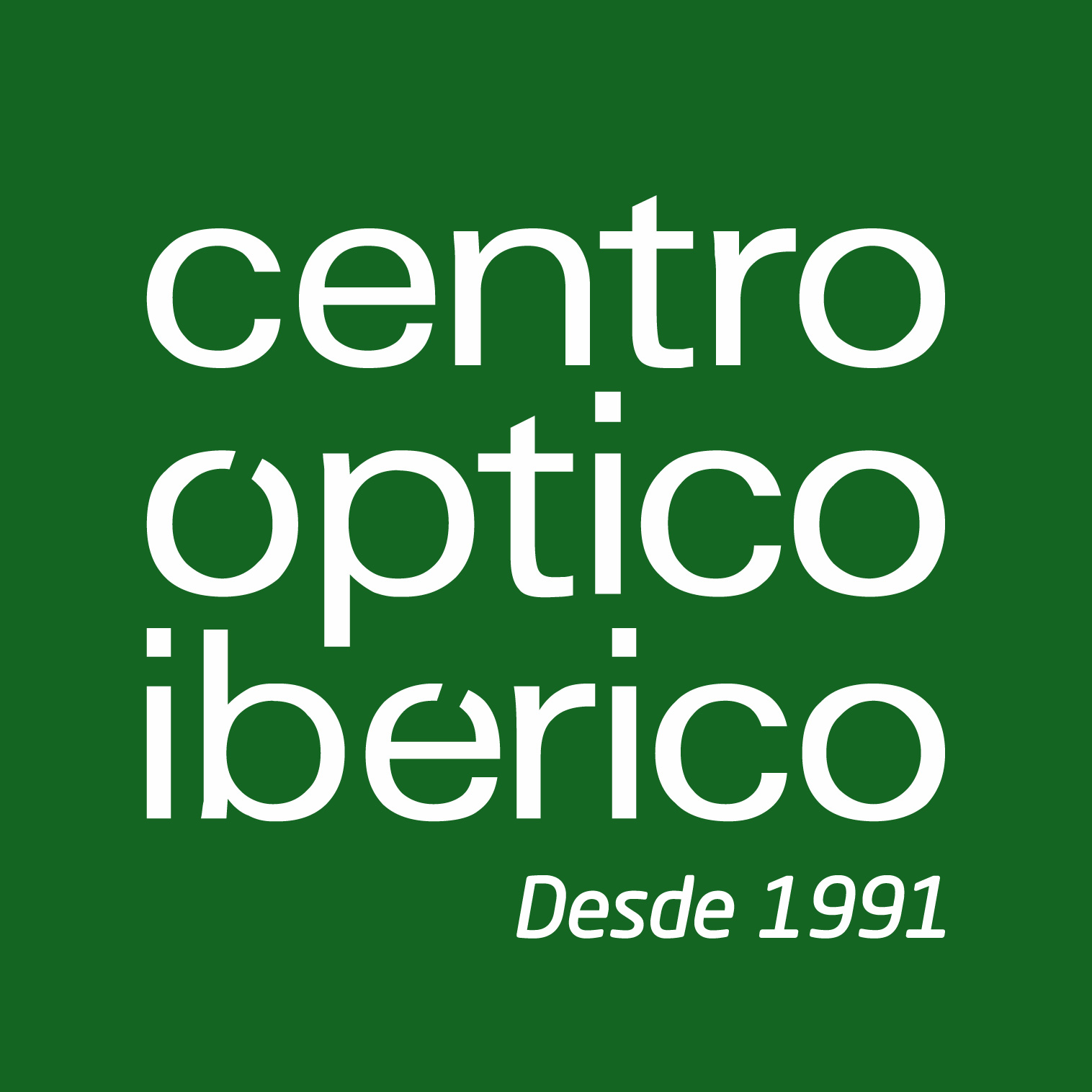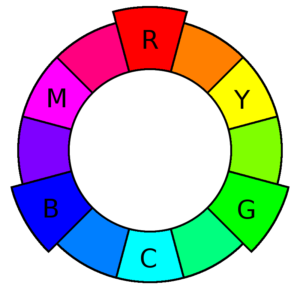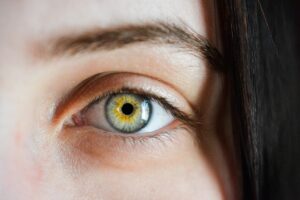How does the eye distinguish colours?
There are 2 types of photosensitive (light-sensitive) cells in the retina
rods and cones.
The rodsThe most sensitive photoreceptors, represented in greater numbers (around 120 million), are decisive in the ability to see in low-light environments and make it possible to distinguish between light and dark tones. The conesThese cells, fewer in number (around 6 million), are specialised in colour perception.
The latter can be divided into three types:
- S cones (sensitive to blue light - short wavelength)
- M cones (sensitive to green light - medium wavelength)
- L cones (sensitive to red light - long wavelength)
With only cones sensitive to these colours, how is it possible to distinguish hundreds of shades of colour? It all comes down to the wavelengths of light reflected and absorbed by the objects we see.
Let's take the green background of the Iberian Optical Centre logo as an example. Of all the light that falls on it, its surface absorbs the blue and red colours and reflects only the green light. It is this light that reaches our retinas, stimulating only the cones sensitive to green light, allowing us to perceive the background of the logo as green.
What if the background of the logo was yellow, for example? In this case, in addition to the colour green, the colour red would also be reflected in equal quantities. The green and red cones would be stimulated in the retina, giving rise to the perception of the colour yellow.
It works like this for all colours, as shown in the image below
Colour vision anomalies
Most human beings are trichromatsbecause they have all three types of cones.
However, the absence or anomaly of at least one of the three types of cones causes alterations in colour perception.
For example, the absence of L cones (sensitive to red) makes the colour red unnoticeable, so objects are mostly perceived in green and/or blue tones.
In the case of anomaly of the L cones, red is still perceived, but not with the same tonality.
In very rare cases, only one type of cone is present in the retina (monochrome), with objects perceived in shades of black and white.
Ishihara test
Invented in 1917 by Japanese ophthalmologist Dr Shinobu Ishihara, it is the most widely used test for colour vision abnormalities worldwide.
The test consists of viewing round plates made up of small circles of different colours and sizes.
These small circles form figures or wavy lines (used with observers who don't know the figures), which will (or won't) be perceived by the observer, allowing them to conclude whether they are a trichromat or have some kind of anomaly.
The full version of the test consists of 38 plates, although there are also smaller versions with 24 and 14 plates.
Example of two signs where all observers can identify the content (demonstration boards):

To obtain more reliable results, the Ishihara test should not be carried out on digital devicesas the colours of the plates may vary depending on the monitor used.
If you would like to have the test carried out, request it at one of the Iberian Optical Centre shops by booking your free appointment using the button below.







